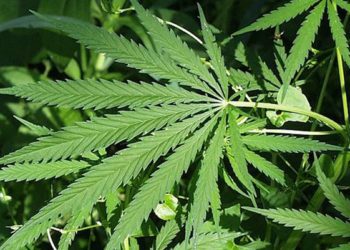Wellness Check: Addictions
2 Minute Medicine is pleased to announce that we are launching Wellness Check, a new series dedicated to exploring new research evidence focused on wellness. Each week, we will report on articles examining different aspects of wellness, including (but not limited to) nutrition, sleep, reproductive health, substance use and mental health. This week, we explore the latest evidence-based updates in addictions.
Certain physician beliefs may impede willingness to engage with patients who misuse opioids
1. This quantitative study of physicians found that physicians who carry certain beliefs about blame for and vulnerability to opioid misuse and addiction may contribute to decreased willingness to help these patients.
2. Certain specialties, including internal medicine, family medicine, emergency medicine and addictions medicine, may be more willing to work with patients who misuse opioids.
Evidence Rating Level: 3 (Fair)
Effectively combatting the opioid crisis requires physicians who are willing to work with patients who misuse opioids. However, many providers are not specifically trained in this practice or may be unwilling to work with this population for personal reasons. It is important to examine physician attitude towards these patients, as previous studies have been limited in highlighting barriers to care and access to treatment in patients who misuse opioids.
This quantitative study analyzed responses from 333 Ohio board-certified physicians whose practice had been “reshaped by the pandemic” to provide a more complete overview of physician attitude towards these patients. Physicians who were retired, had changed careers, or had outdated records were excluded. Primary outcomes used a cross-sectional survey to assess physicians perceptions on personal invulnerability to opioid misuse, healthcare provider blame for the opioid crisis, and controllability of opioid misuse and addiction.
This study found that physicians who were less willing to treat patients who misuse opioids were more likely to have three major beliefs: they were more likely to think that opioid addiction was controllable, that they themselves would not be vulnerable to opioid misuse and addiction, and that prescribers were not to blame for the opioid crisis. Furthermore, physicians working in internal medicine, family medicine, emergency medicine, and addictions medicine were more willing to work with patients who misused opioids. Limitations of this study include possible limited generalizability because the analysis was performed with a survey study using a convenience sample and relatively small sample size. Nonetheless, this study’s findings were significant in suggesting there was a negative association between physicians who distance themselves from people who misuse opioids and treatment willingness.
Cannabis legalization may lead to an increased in cannabis-related hospitalizations
1. This quantitative study of hospital discharge summaries from Quebec, Canada found that cannabis-related hospitalizations were increased in boys aged 10-14 after legalization.
2. Cannabis legalization did not lead to an increase in hospitalization rates for either gender in those aged 15-19 after legalization.
Evidence Rating Level: 2 (Good)
In recent years, the regulation and legalization of cannabis has been a hotly debated topic. In Canada, recreational cannabis use was legalized on October 17, 2018. Because cannabis may be particularly harmful to youth, it is important to measure the effects of cannabis legalization on hospitalization rates. This cross-sectional quantitative study compared cannabis-related hospitalizations in Quebec, Canada one year prior to legalization (October 17, 2017 to March 31, 2018), to one year after legalization (October 17, 2018 to March 31, 2019) using hospital discharge summaries. Two control groups were included to minimize seasonal confounding. All cannabis-related hospitalizations in Quebec before March 31, 2019 were recorded.
During this study period, 12,858 cannabis-related hospitalizations were identified. The researchers found that cannabis-related hospitalization rates decreased or were not significantly different before and after legalization for most age groups, except in young males (though rate ratios were not statistically significant in this subgroup). The hospitalization rate for boys aged 10-14 increased significantly after legalization; most of these hospital stays were due to mental or behavioral harm rather than poisoning. Limitations of this study include its focus on one province within Canada (Quebec) which may have limited generalizability to other countries. Furthermore, cannabis use may have been underreported prior to legalization. Despite these limitations, this study’s findings suggest rates of cannabis-related hospitalization increased in males under the age of 15 after legalization. This study may hold value in determining the effects of cannabis legalization as well as those most at risk for hospitalization.
Adolescent misuse of prescription opioids may lead to heroin use in adulthood
1. This quantitative study of high school seniors between 1976-2000 found that nearly 1 in 3 high school seniors who misused prescription opioids as high school seniors later used heroin by age 35.
2. The study also found that increased opioid prescriptions in the 1990s and 2000s may have led to increased opioid overdoses in recent years.
Evidence Rating Level: 2 (Good)
Opioid misuse and overdoses are a major problem in the United States. One factor that may be leading to the rate of heroin dependence is the growing population of youth with a history of nonmedical use of prescription opioids. However, there is a paucity in research examining the association between the prospective use of medical and nonmedical opioid misuse during adolescence, and future heroin use in adulthood.
This quantitative study analyzed self-reported responses about drug use from 11,012 adolescents over 17 years in the national Monitoring the Future study. Adolescents in 12th grade from 25 cohorts spanning 1976-2000 who provided at least 1 wave of follow-up data (at the age of 30 and/or 35) were included. Participants were divided into five different categories based on opioid usage at the age of 18: 1) no lifetime exposure (control group); 2) medical prescription use; 3) medical use followed by nonmedical misuse; 4) nonmedical misuse followed by medical use; 5) nonmedical misuse only. Participants who reported lifetime heroin use at 18 were excluded. Primary outcome assessed for any heroin use through age 35.
When subgroups were compared amongst one another for heroin use through age 35, the researchers found that those who reported nonmedical prescription opioid use had the highest odds of heroin use by age 35. Adolescents who reported medical opioid use also were at greater risk. One limitation of this study may be the fact that the data is self-reported. Nonetheless, this study’s findings may hold value in determining which patients may be high-risk for developing heroin addiction later in life. Furthermore, these findings indicate the importance of vigilant monitoring after opioid prescriptions early in life.
Image: PD
©2021 2 Minute Medicine, Inc. All rights reserved. No works may be reproduced without expressed written consent from 2 Minute Medicine, Inc. Inquire about licensing here. No article should be construed as medical advice and is not intended as such by the authors or by 2 Minute Medicine, Inc.






